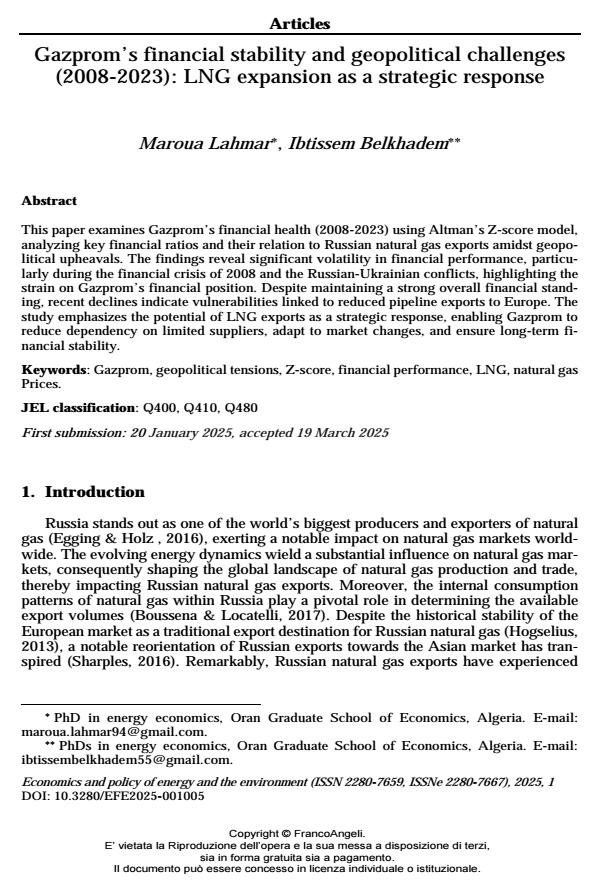Gazprom’s financial stability and geopolitical challenges (2008-2023): LNG expansion as a strategic response
Journal title ECONOMICS AND POLICY OF ENERGY AND THE ENVIRONMENT
Author/s Maroua Lahmar, Ibtissem Belkhadem
Publishing Year 2025 Issue 2025/1
Language English Pages 22 P. 125-146 File size 214 KB
DOI 10.3280/EFE2025-001005
DOI is like a bar code for intellectual property: to have more infomation
click here
Below, you can see the article first page
If you want to buy this article in PDF format, you can do it, following the instructions to buy download credits

FrancoAngeli is member of Publishers International Linking Association, Inc (PILA), a not-for-profit association which run the CrossRef service enabling links to and from online scholarly content.
This paper examines Gazprom’s financial health (2008-2023) using Altman’s Z-score model, analyzing key financial ratios and their relation to Russian natural gas exports amidst geopolitical upheavals. The findings reveal significant volatility in financial performance, particularly during the financial crisis of 2008 and the Russian-Ukrainian conflicts, highlighting the strain on Gazprom’s financial position. Despite maintaining a strong overall financial standing, recent declines indicate vulnerabilities linked to reduced pipeline exports to Europe. The study emphasizes the potential of LNG exports as a strategic response, enabling Gazprom to reduce dependency on limited suppliers, adapt to market changes, and ensure long-term financial stability.
Keywords: Gazprom, geopolitical tensions, Z-score, financial performance, LNG, natural gas Prices.
Jel codes: Q400, Q410, Q480
Maroua Lahmar, Ibtissem Belkhadem, Gazprom’s financial stability and geopolitical challenges (2008-2023): LNG expansion as a strategic response in "ECONOMICS AND POLICY OF ENERGY AND THE ENVIRONMENT" 1/2025, pp 125-146, DOI: 10.3280/EFE2025-001005